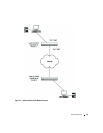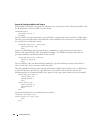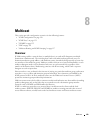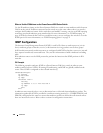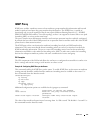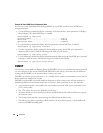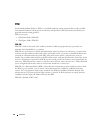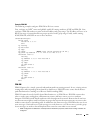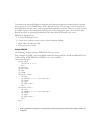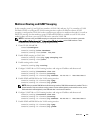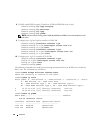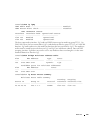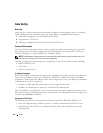
Multicast 155
Example: PIM-SM
The following example configures PIM-SM for IPv4 on a router.
First, configure an OSPF
1
router and globally enable IP routing, multicast, IGMP, and PIM-SM. Next,
configure a PIM-SM rendezvous point with an IP address and group range. The IP address will serve as an
RP for the range of potential multicast groups specified in the group range. Finally, enable routing,
IGMP, PIM-SM, and OSPF on one or more interfaces.
console#configure
router ospf
router-id 3.3.1.1
exit
ip routing
ip multicast
ip igmp
ip pimsm [NOTE: This router should be an RP.]
ip pimsm rp-address 1.1.1.1 224.0.0.0 240.0.0.0
interface vlan 15
routing
ip address 3.3.3.1 255.255.255.0
ip pimsm
ip igmp
ip ospf area 0
exit
interface vlan 30
routing
ip address 1.1.1.1 255.255.255.0
ip pimsm
ip igmp
ip ospf area 0
exit
exit
PIM-DM
PIM-DM protocol is a simple, protocol-independent multicast routing protocol. It uses existing unicast
routing table and join/prune/graft mechanism to build a tree. PIM-DM creates source-based shortest-
path distribution trees making use of Reverse Path Forwarding (RPF).
PIM-DM cannot be used to build a shared distribution tree, as PIM-SM can. PIM-DM assumes that
when a sender starts sending data, all downstream routers and hosts want to receive a multicast
datagram. PIM-DM initially floods multicast traffic throughout the network. Routers that do not have
any downstream neighbors send back Prune messages that instruct the upstream router to remove that
multicast route from its forwarding table. In addition to the Prune messages, PIM-DM makes use of two
more messages: Graft and Assert. Graft messages are used whenever a new host wants to join the group.
Assert messages are used to shut off duplicate flows onto the same multi-access network.
1. OSPF configuration is added as a unicast protocol for illustration purposes; static unicast routing could also be
configured.



